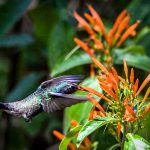
I thought this would be an easy post to prepare – just get the data and paste it in here. However, as you see from the chart above, the answers depend very much on the source. I checked a site named Our World in Data (red bars), Wikipedia (blue bars), and ChatGPT (not included in the chart as the data seemed even less reliable).
For some countries, the differences between the two main sources are not big – maybe one site counts Kiwi as a fruit rather than a bird species, and thus gets a slightly different species count for New Zealand. However, for other countries, the discrepancy is huge.
Take Indonesia – the country is widely reported to have the highest number of endemics in the world, yet Wikipedia only counts 193 such species, which does not sound very credible, and was the reason I used the Our World data for the main ranking in the chart.
For some countries, it is probably mainly an issue of definition – the three endemics of the US seem to exclude those of Puerto Rico (about 24) and Hawaii (about 39). For other countries, such as Mexico, the reason for the divergence is a bit more mystifying.
In any case, island nations are clearly the best spot to harbor endemics, with Indonesia, Australia (a rather big island), and the Philippines ranking highest. The second big location for endemics is South America, with Brazil, Peru, Colombia, and Venezuela on the list.
One final comment, which may make you wonder why I worked on this post in the first place. I still find the concept of endemics somewhat dubious, particularly when based on countries rather than on separable geographic entities (e.g., islands, continents). It seems like a sneaky backdoor entrance for patriotism to sneak into birding – and I would rather patriotism stays outside.













BirdLife International does offer such data, but – from experience – horribly outdated.
Here in Mexico, most of our “endemics” may breed just across the border in the U.S., usually in southeastern Arizona. Others do the same in Guatemala and/or Belize. Our literature tends to accept these species as endemics or semi-endemics. Again, patriotism. But you can find the same tolerance in materials written by U.S. writers in regards to the birds of Mexico.
NZ govt is killing many of it’s endangered endemic birds with aerial spreading over vast tracts of bush and tussock, the highly toxic poison 1080 (ten-eighty) aimed at killing possums, supposedly to keep these mostly vegetarians from eating birds eggs and to stop them spreading tuberculosis to cows on farms. Insane!